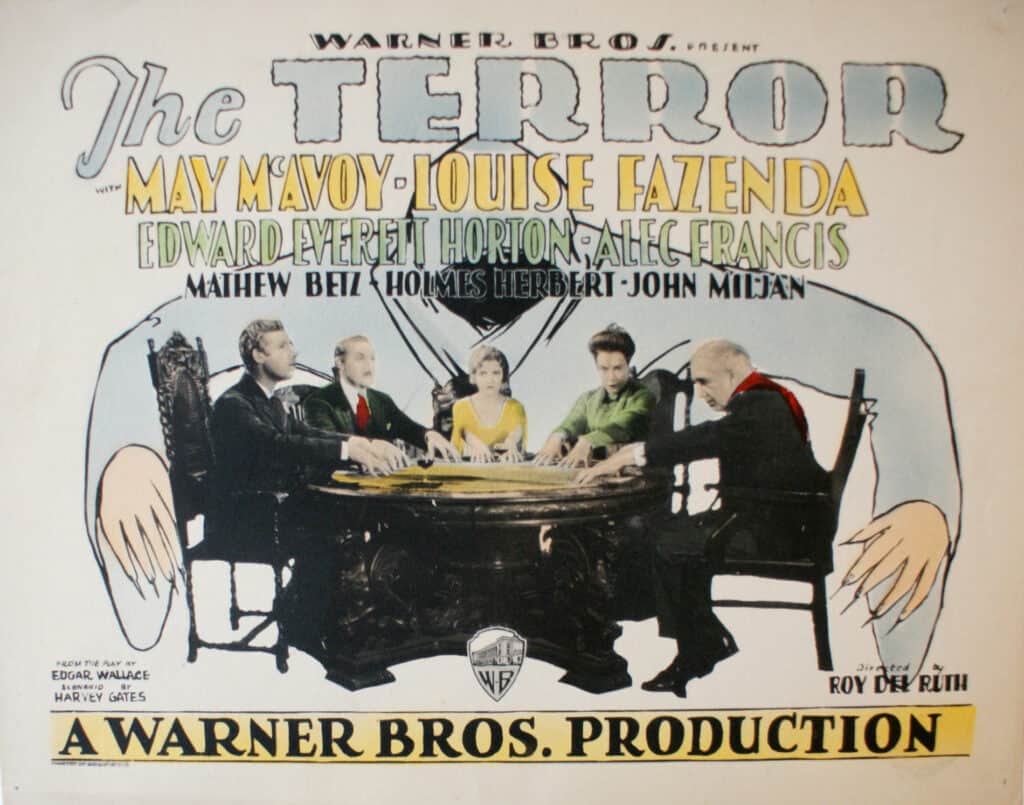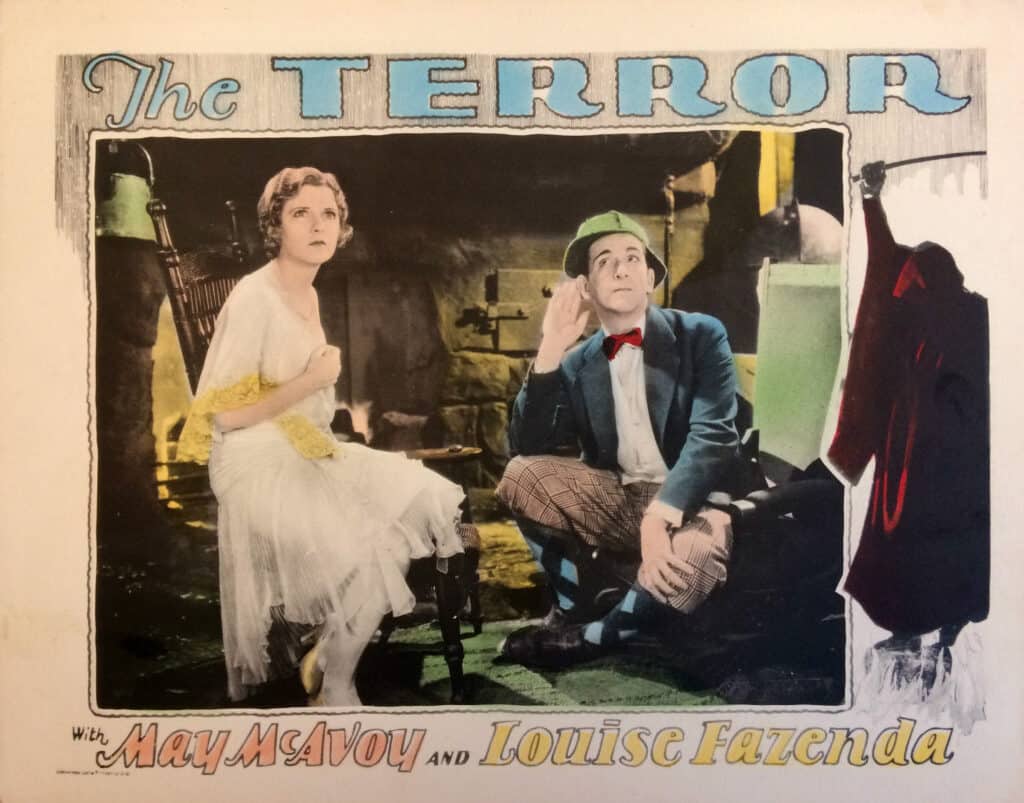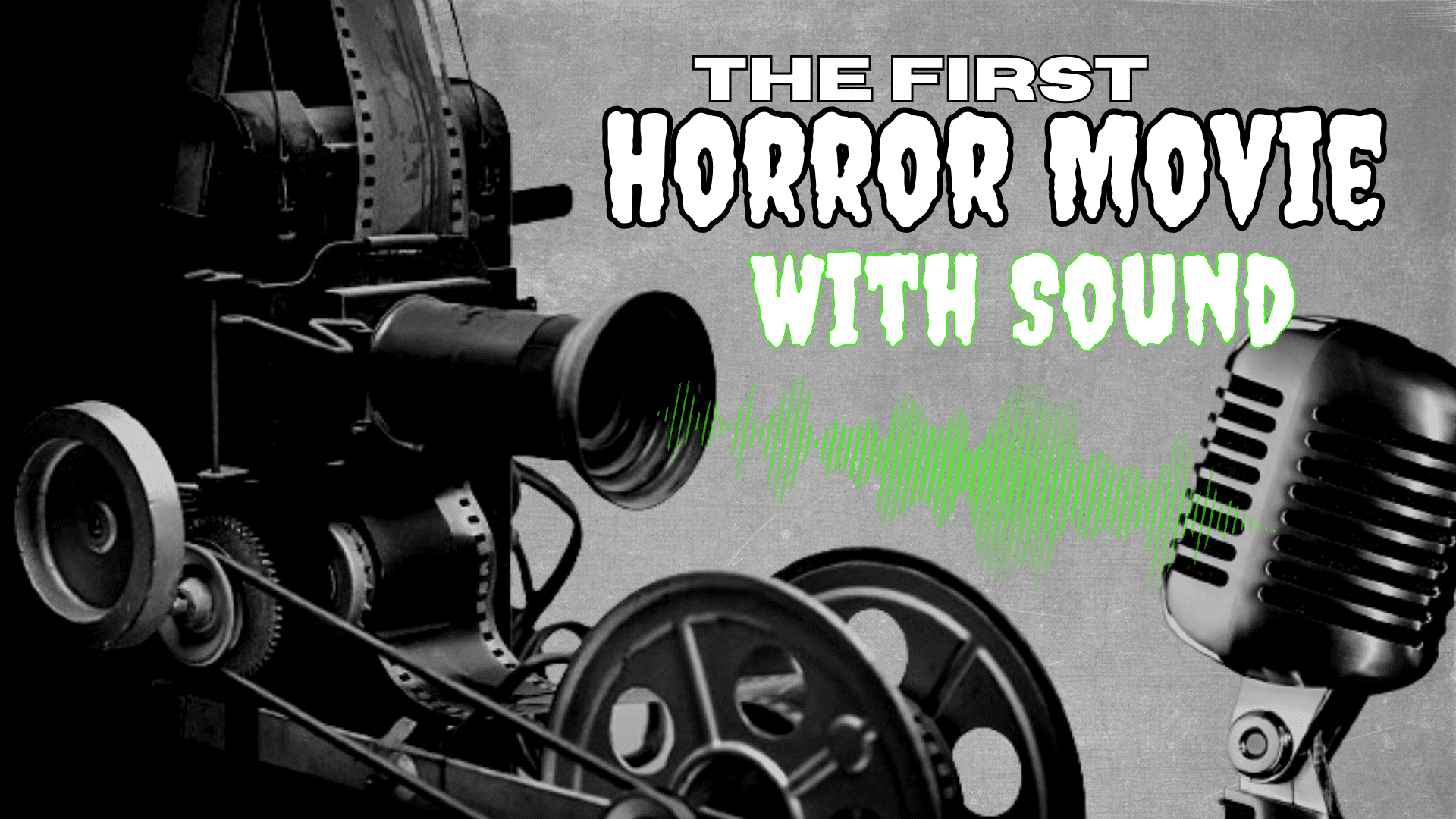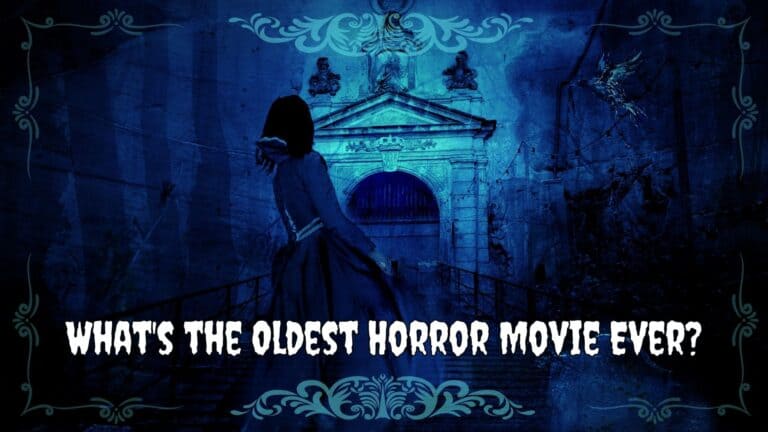What Was the First Horror Movie with Sound?
The 1928 movie “The Terror” was the First Horror Movie with Sound. The sound-on-disc technology used in “The Terror” was called Vitaphone. It was a system in which a separate record played the sound while the film was being projected. The Vitaphone system was revolutionary at the time.
Horror films have grown to be an important part of the entertainment industry in modern times. It wasn’t always the case, though. In early filmmaking history, horror movies were non-existent.
However, everything changed in 1928 with the release of “The Terror,” the first horror film with sound.
The Edgar Wallace drama of the same name served as the inspiration for the Roy Del Ruth-directed movie, which also starred May McAvoy, Louise Fazenda, and Edward Everett Horton in prominent roles.

The Plot of the Movie
The film opens with “The Terror,” a mysterious killer who occupies an English country house that has been converted into an inn.
Guests, including the spiritualist Mrs. Elvery and Detective Ferdinand Fane, arrive at the inn and are immediately frightened by strange noises and mysterious organ music.
Adding to the chaos, two just-released criminals, Connors, and Marks, swear revenge upon “The Terror.”
As the night progresses, murders take place, and the identity of the killer is finally revealed.
The Cast of the First Horror Movie with Sound
- May McAvoy played the role of Olga Redmayne, a guest staying at the inn who becomes involved in the mystery surrounding “The Terror.” She was from a well-to-do family that owned a large livery stable where the Waldorf-Astoria now stands. She received a star on the Hollywood Walk of Fame at 1731 Vine Street.
- Louise Fazenda played the role of Mrs. Elvery, a spiritualist who is one of the guests at the inn. Fazenda was known for her comedic roles, and her inclusion in the film added a touch of humor to the horror genre. Her character’s beliefs in the supernatural also added an exciting element to the film. She received a star on the Hollywood Walk of Fame in 1958.
- Edward Everett Horton played the role of Ferdinand Fane, a Scotland Yard detective brought in to solve the mystery of “The Terror.” Horton was a well-known character actor of the time, and his portrayal of Fane added a sense of authority and intelligence to the film. Horton was a bachelor all his life, and never married. He also received a star on the Hollywood Walk of Fame at 6427 Hollywood Boulevard.
- Alec B. Francis played the role of Dr. Redmayne, the owner of the inn where the film takes place. Francis was a veteran actor, and his portrayal of the doctor added a sense of credibility to the film. He died in Hollywood Hospital at age 66 after emergency abdominal surgery on July 6, 1934.
- Matthew Betz played the role of Joe Connors, a just-released criminal who is seeking revenge against “The Terror.” Betz’s portrayal of Connors added a sense of danger and unpredictability to the film. He appeared in more than 120 films over his career and died at the age of 56 on January 26, 1938
- Otto Hoffman played the role of Soapy Marks, another just-released criminal who is seeking revenge against “The Terror.” Hoffman’s portrayal of Marks added a sense of desperation and ruthlessness to the film. He appeared in over 200 films in his career and died in Los Angeles on June 23, 1944.
- Holmes E. Herbert played the role of Goodman, a guest staying at the inn who becomes involved in the mystery of “The Terror.” Herbert’s portrayal of Goodman added a sense of curiosity and intelligence to the film. He often played British gentleman roles, and he died on December 26, 1956, at age 74.
- Joseph Gerard played the role of Supt. Hallick, a police officer who is also investigating the mystery of “The Terror.” Gerard’s portrayal of Hallick added a sense of authority and law enforcement to the film. He was once a printer who worked in newspapers. He died at age 78 on August 21, 1949.
- John Miljan played the role of Alfred Katman, a suspect in the investigation of “The Terror.” Miljan’s portrayal of Katman added a sense of mystery and intrigue to the film. He too appeared in more than 200 films in his career, and died at age 67, on January 24, 1960.
- Frank Austin played the role of Cotton, a member of the inn’s staff who becomes involved in the mystery of “The Terror.” Austin’s portrayal of Cotton added a sense of innocence and vulnerability to the film. He was born in 1877 and died on May 13, 1954, at age 76.
“The Terror” was a significant milestone in the horror genre because it was the first film to feature sound. Before this, horror films were silent, and the audience was left to rely solely on visuals to create a sense of terror.
But “The Terror” introduced a new element to the horror genre that would revolutionize the way filmmakers made horror films.
The New Technology of the Time
The sound-on-disc technology used in “The Terror” was called Vitaphone. It was a system in which a separate record played the sound while the film was being projected.
The Vitaphone system was revolutionary at the time because it allowed synchronized sound to be added to films.
While the technology was far from perfect, it paved the way for future advancements in sound technology in the film industry.

Another reason why “The Terror” was groundbreaking was that it was an all-talking film. Warner Bros. had previously released “Lights of New York,” which was the first all-talking film. However, “The Terror” was the first all-talking horror film.
This meant that the audience could hear everything that was happening in the film, including the dialogue, sound effects, and music.
The addition of sound made the horror more intense and realistic, and it created an immersive experience for the audience.
The success of “The Terror” paved the way for future horror films. Soon, other filmmakers began experimenting with sound and adding it to their films.
The horror genre became more popular, and filmmakers started to take risks with their films.
In the decades that followed, the horror genre continued to evolve, becoming one of the most popular genres in the film industry.
It’s a Wrap
In conclusion, “The Terror” was a groundbreaking film that revolutionized the horror genre.
It was the first horror movie with sound, and it introduced a new element to the horror genre that would change how filmmakers made horror films.
The film’s success paved the way for future advancements in sound technology in the film industry.
Today, horror films have become an essential part of the entertainment industry, and it all started with “The Terror.”



